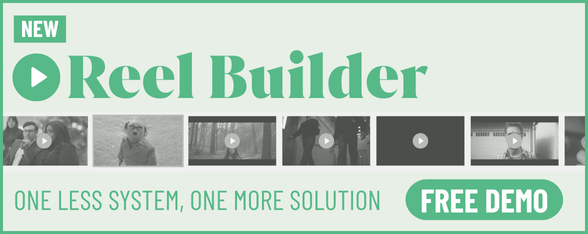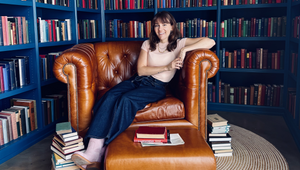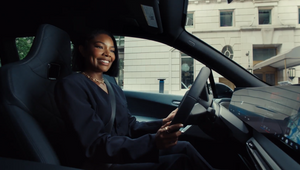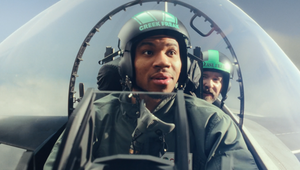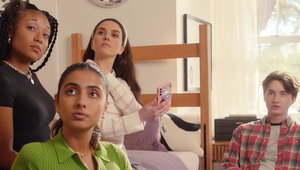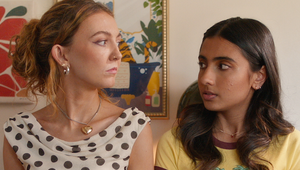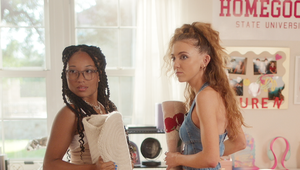
The Directors: Rodney Passè

This imaginative storyteller’s kinetic visual poetry invites viewers into a realm that weaves the surreal and the intimate, the personal and the universal.
Rodney Passè’s work expresses distinct perspectives on the human experience that connect with and transform those who watch his lyrical films.
From his heart-warming ode to family memories, “Life of Photos,” to his striking photographic journey through Cuba “Perserverancia, Son Mi Gente,” Rodney’s powerful works stay with viewers long after screens fade to black.
A visceral, ground-breaking portfolio that encapsulates his unique view of the world, his body of work includes masterpieces for major clients such as Apple, Google, Gucci, Indeed, ESPN, and Lincoln.
When Rodney isn’t crafting innovative cinema, he’s architecting the art world’s next immersive visual experience.
LBB> What are some upcoming projects that you're excited about? Tell us a bit about them?
Rodney> I just signed with Eleanor, which I’m really excited about. Right now, I’m in pre-production for a music video with a jazz musician. It’s a bit more experimental, so I’m really looking forward to how it all comes together. I’m also prepping for a gallery showing—can’t say too much yet, but I’m definitely looking forward to that.
LBB> What excites you in the advertising industry right now, as a director? Any trends or changes that open new opportunities?
Rodney> I feel like storytelling is really making a comeback. It seems like brands are shifting towards creating work that connects with people on a deeper level, focusing more on narrative and emotion rather than just making things look cool.
LBB> What elements of a script sets one apart from the other and what sort of scripts get you excited to shoot them?
Rodney> Honestly, there are a lot of things that can set a script apart, so it's hard to pinpoint just one.
But what really excites me are scripts that aren’t too straightforward—scripts that have layers. I love scripts with depth, that capture a real, sentimental moment, like a slice of life. The ones that bring out human connection and show us something about ourselves.
I’m drawn to commercials that offer a glimpse into life rather than just pushing a product. It’s the scripts with real, authentic human connection that really get me excited.
LBB> How do you approach creating a treatment for a spot?
Rodney> It really depends on the project, but the main thing I focus on is making sure it’s not boring. I want a treatment that pulls you in, not just something filled with words. From the very start, I try to capture the essence of what the project is supposed to be. I think the way you design a treatment really reflects how you approach directing a commercial, so I make sure everything’s aligned from the get-go.
LBB> If the script is for a brand that you're not familiar with/ don’t have a big affinity with or a market you're new to, how important is it for you to do research and understand that strategic and contextual side of the ad? If it’s important to you, how do you do it?
Rodney> Whether I’m familiar with the brand or not, it always comes down to research. I’m huge on research because I need to understand the little nuances, the subtle things that make the brand connect with its audience.
That’s how you find those gems, the things that really resonate.
I dive into what’s worked for them in the past, what projects have gotten great responses, and what the brand’s core language is. It’s about making sure that the brand stays true to itself, whether that’s through metaphors or literally. And honestly, no matter if I know the brand or not, research is key. If you’re familiar with it, sure, it’s easier to start, but you still need to dig deep. Research is everything.
LBB> For you, what is the most important working relationship for a director to have with another person in making an ad? And why?
Rodney> On my internal team, it’s definitely my DP and my producer. After that, everything else falls into place. On the agency side, the creative director is the next key person.
The relationship between us has to be one in which we are aligned in order to make sure that whatever the project is, it’s visually on point. We have to be in sync to make sure we’re producing the best work possible.
LBB> What type of work are you most passionate about - is there a particular genre or subject matter or style you are most drawn to?
Rodney> I grew up playing basketball, so I’ve always been drawn to stories about sports. Sports stories are so layered—the redeemer, the overachiever. There's so many ways those story arcs can be approached. The nuances and subtleties in them just come naturally to me. I directed a Nike project for Kobe Bryant, and it just felt second nature to me, everything we wanted to achieve. That’s the type of work I’m really passionate about.
LBB> What misconception about you or your work do you most often encounter and why is it wrong?
Rodney> Honestly, I’m not sure what the misconceptions are—you’d have to ask the agencies, haha.
LBB> What’s the craziest problem you’ve come across in the course of a production – and how did you solve it?
Rodney> It’s usually budget or scheduling—whether we have enough days to get it done. Those things get sorted pretty quickly once we talk it through with the producers and EPs. Sometimes there’s a casting issue if the agency isn’t convinced about someone and there are questions, but that’s usually just a conversation. But honestly, things are pretty smooth on my sets.
LBB> How do you strike the balance between being open/collaborative with the agency and brand client while also protecting the idea?
Rodney> First off, it has to be collaborative.
It’s about being really clear on the intent and the creative from the start. It’s all discussion—nothing based on feelings, just informed decisions. That way, everyone understands the direction we’re heading. If the agency feels strongly about something that’s different from what I originally pitched, then it’s about figuring out the alternative. I always like to have something on hand so we’re not scrambling—option A, option B.
But honestly, by the time we’re on set, those things are usually ironed out. Even when I’m improvising, it’s still within the vision of what we’re capturing.
LBB> What are your thoughts on opening up the production world to a more diverse pool of talent? Are you open to mentoring and apprenticeships on set?
Rodney> I think opening up the pool is always a good thing—more people getting exposed, more talented people figuring out where they want to put their energy. In terms of mentorship, I teach, so it’s only right to pass down what was passed to me. I’ve had so many people take me under their wing, show me the ropes, help me figure things out. It just makes sense to keep that tradition going.
LBB> Your work is now presented in so many different formats - to what extent do you keep each in mind while you're working (and, equally, to what degree is it possible to do so)?
Rodney> That’s not really something I think about. For me, it’s less about where it’s being seen and more about whether it resonates with the people watching. I focus on quality—on making sure it connects. I can’t get caught up in the rest.
LBB> What’s your relationship with new technology and, if at all, how do you incorporate future-facing tech into your work (e.g. virtual production, interactive storytelling, AI/data-driven visuals etc)?
Rodney> The main thing I stay up on is new lenses, new cameras—just exercising those muscles. When it comes to editing, I pay attention to new techniques. When it comes to AI, I try to keep things as organic and true to the art as possible.
LBB> Which pieces of your work do you feel show what you do best – and why?
Rodney> Google x Life of Photos – It’s just a human story. Honest, real—nothing forced. That’s why it works.
Griselda x CWC – This one is just raw. Feels natural to me, like I’m fully in my element.
Nike x Kobe PROTO – It’s sentimental without overdoing it. Captures what Kobe was, what he meant—that’s the whole point.






